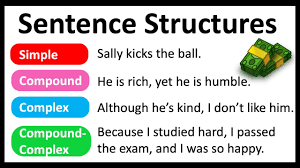- 9022040421
- info@inspireenglishspeakingcenter.in
Basic
Basic
Basic English speaking refers to the ability to communicate in English at a foundational level. It includes understanding and using simple vocabulary, basic grammar structures, and common phrases for everyday communication. Basic English speaking skills typically involve introducing yourself, asking and answering simple questions, talking about personal interests, describing people and objects, and engaging in simple conversations about daily activities.

A basic English grammar course typically covers fundamental concepts essential for understanding and constructing sentences correctly. Here’s a breakdown of what a basic grammar course might include:
Parts of Speech:
- Nouns: Identification, common vs. proper nouns, singular vs. plural.
- Pronouns: Personal pronouns, possessive pronouns, demonstrative pronouns.
- Verbs: Action verbs, linking verbs, auxiliary verbs, verb tenses (present, past, future).
- Adjectives: Descriptive adjectives, comparison of adjectives.
- Adverbs: Types of adverbs, adverb placement.
Sentence Structure:
- Subject and predicate: Identifying the subject and verb in a sentence.
- Types of sentences: Declarative, interrogative, imperative, exclamatory.
- Sentence fragments and run-on sentences: How to avoid them.
Verb Tenses:
- Present tense: Simple present, present continuous.
- Past tense: Simple past, past continuous.
- Future tense: Simple future, future continuous.
- Perfect tenses: Present perfect, past perfect, future perfect.
Subject-Verb Agreement:
- Ensuring that the subject and verb in a sentence agree in number (singular or plural).
Modifiers:
- Adjectives and adverbs: Their roles in modifying nouns and verbs.
- Comparatives and superlatives: Formation and usage.
Punctuation and Capitalization:
- End punctuation: Periods, question marks, exclamation points.
- Commas: Usage in lists, compound sentences, and after introductory elements.

In a basic English vocabulary course, learners typically focus on acquiring essential words and phrases that are commonly used in everyday communication. Here’s a suggested outline for a basic English vocabulary course:
Everyday Vocabulary:
- Greetings and common expressions: hello, goodbye, please, thank you, sorry.
- Numbers: counting numbers, ordinal numbers.
- Days of the week, months of the year, seasons, time expressions.
- Colors, shapes, and basic descriptive words.
Personal Information:
- Names of family members: mother, father, brother, sister.
- Basic personal details: age, nationality, occupation.
- Describing oneself and others: tall, short, young, old, happy, sad.
Home and Daily Life:
- Rooms and furniture: bedroom, kitchen, table, chair, bed.
- Household objects and appliances: refrigerator, stove, television, computer.
- Daily activities and routines: wake up, eat breakfast, go to work/school, watch TV.
Food and Drink:
- Names of common foods and beverages: bread, milk, coffee, rice, fruit, vegetables.
- Ordering food at a restaurant: menu items, drinks, desserts

introduction (Greeting and Warm-Up):
- Start with a simple greeting and warm-up questions to help the test-taker feel comfortable speaking.
- Example: “Hello, welcome to the English speaking test. How are you today? Can you tell me a little bit about yourself?”
Picture Description:
- Show a picture to the test-taker and ask them to describe what they see. This assesses their ability to describe people, places, and objects.
- Example: “Please describe the picture you see here. What do you notice? What are the people doing?”
Role-Play Scenario:
- Provide a scenario and ask the test-taker to role-play a conversation based on the given situation. This assesses their ability to engage in spoken communication and use appropriate language in context.

Level: Basic
Subject-Verb Agreement:
- Provide a subject and ask the test-taker to construct a sentence using the appropriate verb form.
- Example: Subject: “She”; Verb: “to eat” → Test-taker constructs: “She eats pizza.”
- Provide a subject and ask the test-taker to construct a sentence using the appropriate verb form.
Complete the Sentence:
- Present incomplete sentences and ask the test-taker to fill in the blanks with appropriate words.
- Example: “I ___ to school every day.” → Test-taker completes: “I go to school every day.”
- Present incomplete sentences and ask the test-taker to fill in the blanks with appropriate words.
Sentence Order:
- Present a jumbled sentence and ask the test-taker to arrange the words in the correct order.
- Example: Jumbled sentence: “the park They in play.” → Test-taker arranges: “They play in the park.”
- Present a jumbled sentence and ask the test-taker to arrange the words in the correct order.
Level: Intermediate
Sentence Transformation:
- Provide a sentence and ask the test-taker to transform it using a given word or phrase, maintaining the original meaning.
- Example: Original sentence: “He doesn’t like coffee.” → Transformation: “He dislikes coffee.”
- Provide a sentence and ask the test-taker to transform it using a given word or phrase, maintaining the original meaning.
Sentence Combining:
- Present two short sentences and ask the test-taker to combine them into one sentence using a conjunction.
- Example: Sentence 1: “She likes pizza.” Sentence 2: “He likes burgers.” → Combined sentence: “She likes pizza, but he prefers burgers.”
- Present two short sentences and ask the test-taker to combine them into one sentence using a conjunction.
Sentence Expansion:
- Provide a simple sentence and ask the test-taker to expand it by adding additional information.
- Example: Simple sentence: “She ate.” → Expanded sentence: “She ate a delicious meal at the restaurant yesterday.”
- Provide a simple sentence and ask the test-taker to expand it by adding additional information.
Level: Advanced
Complex Sentences:
- Present a topic and ask the test-taker to construct a complex sentence using subordinate clauses.
- Example: Topic: “Education”; Constructed sentence: “Although education is important, access to quality education remains a challenge in many regions.”
- Present a topic and ask the test-taker to construct a complex sentence using subordinate clauses.
Sentence Correction:
- Present sentences with grammatical errors and ask the test-taker to identify and correct them.
- Example: Incorrect sentence: “He goed to the store yesterday.” → Corrected sentence: “He went to the store yesterday.”
- Present sentences with grammatical errors and ask the test-taker to identify and correct them.
Creative Writing Prompt:
- Provide a creative writing prompt and ask the test-taker to compose a well-constructed sentence or short paragraph.
- Example prompt: “Write a sentence describing your favorite childhood memory.”
- Provide a creative writing prompt and ask the test-taker to compose a well-constructed sentence or short paragraph.
